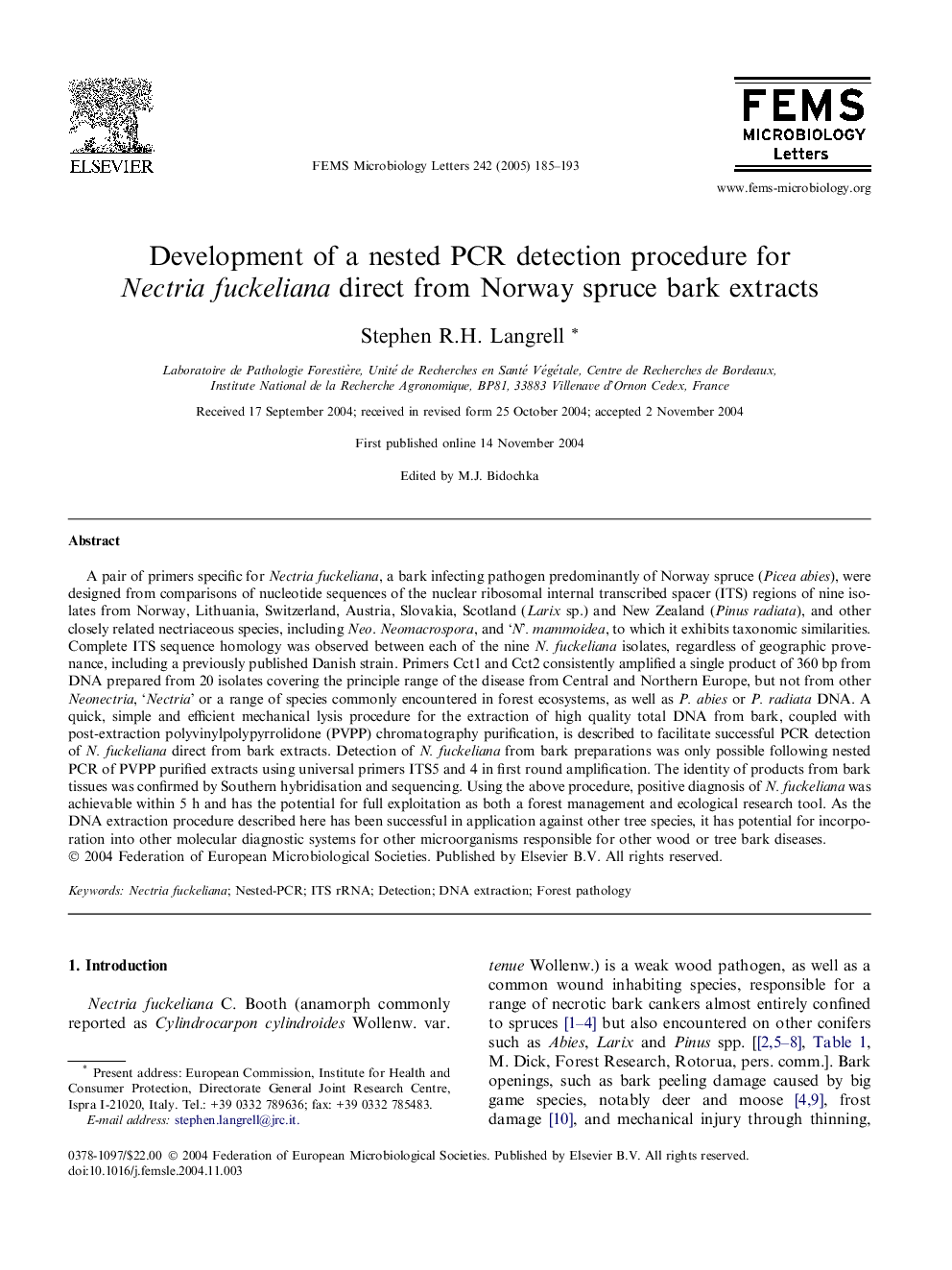| Article ID | Journal | Published Year | Pages | File Type |
|---|---|---|---|---|
| 9122218 | FEMS Microbiology Letters | 2005 | 9 Pages |
Abstract
A pair of primers specific for Nectria fuckeliana, a bark infecting pathogen predominantly of Norway spruce (Picea abies), were designed from comparisons of nucleotide sequences of the nuclear ribosomal internal transcribed spacer (ITS) regions of nine isolates from Norway, Lithuania, Switzerland, Austria, Slovakia, Scotland (Larix sp.) and New Zealand (Pinus radiata), and other closely related nectriaceous species, including Neo. Neomacrospora, and 'N'. mammoidea, to which it exhibits taxonomic similarities. Complete ITS sequence homology was observed between each of the nine N. fuckeliana isolates, regardless of geographic provenance, including a previously published Danish strain. Primers Cct1 and Cct2 consistently amplified a single product of 360 bp from DNA prepared from 20 isolates covering the principle range of the disease from Central and Northern Europe, but not from other Neonectria, 'Nectria' or a range of species commonly encountered in forest ecosystems, as well as P. abies or P. radiata DNA. A quick, simple and efficient mechanical lysis procedure for the extraction of high quality total DNA from bark, coupled with post-extraction polyvinylpolypyrrolidone (PVPP) chromatography purification, is described to facilitate successful PCR detection of N. fuckeliana direct from bark extracts. Detection of N. fuckeliana from bark preparations was only possible following nested PCR of PVPP purified extracts using universal primers ITS5 and 4 in first round amplification. The identity of products from bark tissues was confirmed by Southern hybridisation and sequencing. Using the above procedure, positive diagnosis of N. fuckeliana was achievable within 5 h and has the potential for full exploitation as both a forest management and ecological research tool. As the DNA extraction procedure described here has been successful in application against other tree species, it has potential for incorporation into other molecular diagnostic systems for other microorganisms responsible for other wood or tree bark diseases.
Related Topics
Life Sciences
Biochemistry, Genetics and Molecular Biology
Genetics
Authors
Stephen R.H. Langrell,
